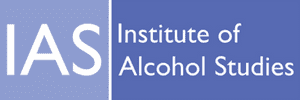
Have you ever downloaded an app to improve your health? Millions of people seek help online to be a little more mindful of their drinking habits, and to stick with health goals as “Dry January” stretches further away. Unknown to many is that some of the most popular alcohol-tracking websites and apps are from organisations that claim to be independent, while funded by the alcohol industry – charities like Drinkaware in the UK. These popular alcohol-industry backed apps could actually be making it more difficult to accurately track and reduce your drinking.
We found alcohol-industry apps contain misinformation and dark patterns that could ‘nudge’ users to actually increase how much alcohol they drink.
In our paper, published in peer-reviewed journal Health Promotion International, we call these “dark apps”. These apps distort users’ perceptions of alcohol-related harm in ways that benefit industry profits, not users’ health. We identified two types:
- Promotional apps pushed industry narratives or imagery that encourage drinking, like “responsible drinking” messaging.
- Deficient apps lacked essential health information or effective behavior-change strategies, making them ineffective.
Can you spot the dark patterns in these images? (answers at the end)
No? If the images seem fine, keep reading – I’ll show you the deceptive tricks these apps use so you can seek help safely online.


Let’s back up. What did we do?
At the London School of Hygiene and Tropical Medicine, my co-authors and I began working on a research study that sought to answer the question: does an app’s funding source impact how the app is designed? Previous research had shown that a significant proportion of industry profit comes from people drinking above the national guidelines – so reducing harm (aka consumption) seems to conflict with industry’s commercial interest. Other industry materials, like school resources and industry websites, have also previously been found to contain health misinformation. No one had looked at alcohol tracking apps by their funding source before. We analysed 25 popular alcohol-tracking apps, comparing 15 backed by the alcohol industry with 10 promoted by independent organisations, like the NHS and Alcohol Change UK. We ran apps from the UK, Ireland, USA, Canada, New Zealand, and Australia through our rigorous ‘Dark Apps Assessment Framework’ to test their health information – what they said and how they said it – and their functionality.
What did we find? An alarming lack of advice.
Industry-backed apps were less likely to tell users about serious health problems related to alcohol – like cancer, which was only mentioned within 33% of industry tools, while cardiovascular disease appeared in just 20%. Many industry-backed apps lacked basic functions that you would expect from an app that is meant to help users improve their health. 53% didn’t tell users if they exceeded national drinking guidelines, and only 33% informed users of their alcohol-related health risk (compared to 100% of independent apps).
Widespread misinformation.
93% of the industry funded apps contained misinformation strategies. Ninety three percent.Some apps reassured users that drinking was normal or culturally expected (“social norming”). Others shifted the blame from the actual cause of harm (alcohol), to something else, like blaming “excessive” drinking (“pro-industry framing”). To be clear, there is no ‘safe’ level of alcohol consumption. The risks of alcohol-related harm start from any level of regular drinking and then rise with the amounts of alcohol being drunk.
More than half contained deceptive patterns. Sound ominous? They are.
Deceptive patterns are sneaky design tactics that manipulate the user into making choices that benefit the apps designer and/or funder, not the user. Picture this; you’ve had two large glasses of wine at the pub and go to log your drinks. You log your drinks, but the app only offers one wine glass size – a small one. It’s subtle, but you can see how that would work – you enter the number of wine glasses you had, and you’re told you are drinking less than you are – in this example, the difference of one more drink. This isn’t imaginary – we found that 62% of industry-tools had small wine glass sizes only. It’s not just wine glasses – alcohol industry- backed apps provided far fewer drink options in general – a mean of 24 (max 64), compared to independent apps with a mean of 275 (max 1464).
Some apps were designed so they couldn’t even provide complete advice. The Drinkaware Ireland Quiz asks you how much alcohol you had the previous Saturday, and then a total for the rest of the week – so it could only identify binge drinking if you did it on a Saturday. It’s disingenuous for these apps to be pushing a “responsible drinking” narrative, when they’re making it harder to track how much you’re actually drinking.
Don’t be fooled. Here’s what’s really in those images.
We looked for over twenty five different pro-industry misinformation strategies and dark patterns – below are three visual examples.
Drinkaware UK’s weekly unit calculator is an example of poor visual communication.
- Look at the numbers above the bars – every day the user is binge drinking, but the calculator fails to recognise them as a problem, highlighting only Saturday (9 units) in red.
- Look to the middle of the page – technically the UK alcohol guideline is included. But it’s half way down the page, so you need to scroll down on your computer to find it. It is also in tiny text – half the size of the cheeseburger calculation. To be fair, the text is in red, so in our research the tool would have scored positively for that aspect of visual communication.
Let’s move to the visual suggestion in the Drinkwise image.
- People are smiling, having fun, having drinks (a few, judging by the numbers above the cocktails). Classic advertising – appeal to the emotions, create positive visual associations so people feel good about the product, even if the words convey harm.
- A picture of alcohol might seem innocent, but previous research has shown that alcohol-dependent patients shown alcohol cues report a stronger urge to drink. These are ‘health apps’, they are meant to help people, not harm them – their developers must be aware of the impact of their design choices, and should always design to protect their most vulnerable users.
Finally with the Cheers! Quiz, we reach full visual and verbal misdirection.
- The graph has “green-for-go” bars.
- Look at the key – the green bars are labelled ‘Feeling the buzz’.
- This user in both quizzes is drinking above New Zealand’s daily (2SD) and binge (6SD) limits – but the tool doesn’t tell them.
Our findings are clear – don’t use alcohol industry backed apps or websites if you want help to reduce your drinking.
Are these apps really so harmful? I think so – these apps potentially displace, obstruct, or delay engagement with effective public health interventions. If interaction with these distorts a user’s perception of the impact alcohol could be having on their health, it is conceivable that they are less likely to ever download a second, independent app (that actually works) – why would they? The first app told them they were fine.
I think everyone deserves to have accurate information to make informed choices. The public are entitled to more transparency and should be provided with warnings on websites and app stores about potential conflicts of interest. They deserve to be told if an app has or has not been properly evaluated to make sure it helps rather than harms its users.
If you’re looking specifically for help with drinking, there are some great resources out there. A good place to start would be the NHS, other legitimate health providers, and independent charities like Alcohol Change UK. They have a website and digital tools that are not funded by the alcohol industry.
A final thought – our study is a new link in a much longer chain of evidence.
It exemplifies the subtle ways that industry actors use corporate social responsibility activities to influence the public and policymakers, in this case promoting digital alcohol-consumption tools to appear to be ‘doing good’, but in effect bypassing legitimate information sources in order to promote industry narratives, spread health misinformation, and nudge users towards increasing consumption. Our study provides further evidence that when responsibility is passed to the industry for educating the public about alcohol harms, the industry uses the opportunity to covertly mislead the public and promote consumption.
Next time you reach out for help online, think twice about who is behind that app – it could make the difference between finding an app that helps you or harms you.
Written by Dr Elliott Roy-Highley, University College London, and Professor Mark Petticrew, London School of Hygiene and Tropical Medicine.
All IAS Blogposts are published with the permission of the author. The views expressed are solely the author’s own and do not necessarily represent the views of the Institute of Alcohol Studies.
